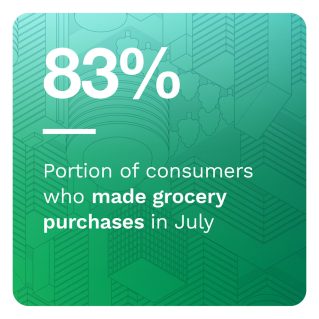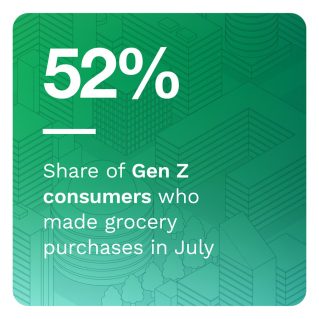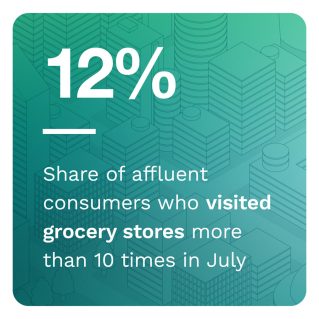Consumers Stretch Their Spend to Keep Pantries and Wallets Full

Inflation fears are altering consumer behaviors in interesting ways. Affluent consumers visit stores frequently in search of bargains, and millennials are taking refuge from high grocery prices by leveraging restaurant food’s relative affordability. In addition, millions of consumers took to the open road in July to take advantage of lower lodging and travel prices, and in a historic shift, older consumers are leaning more toward online travel purchasing.
The PYMNTS Monthly Series “Digital Economy Payments: Consumers Buy Into Food Bargains” reveals consumers’ new coping strategies for rising food prices and the pent-up demand for travel that found an affordable outlet in July.
Key findings in the report include:
• Consumers are shopping more — for less.
Rising prices mean consumers are getting creative about how they spend their budget, and this trend has not evaded America’s highest earners. Though the average amount spent per purchase did not rise, 24% of consumers made six or more grocery purchases in July, with 12% of higher-income earners visiting stores more than 10 times. This suggests that these consumers make many small purchases, likely consisting of items that are on sale at specific locations.
Though the average amount spent per purchase did not rise, 24% of consumers made six or more grocery purchases in July, with 12% of higher-income earners visiting stores more than 10 times. This suggests that these consumers make many small purchases, likely consisting of items that are on sale at specific locations.
Our data also finds that consumers with higher incomes are creating restaurant experiences at home — buying lots of fresh vegetables and meats along with prepared foods as meal helpers.
Forty-two percent of consumers with high incomes purchased prepared food when most recently buying groceries, we found, and 77% of high-income consumers purchased fresh meat or vegetables.
• Millennials boost their restaurant visits as Gen Z raids their parents’ fridges.
Millennials and bridge millennials stood out in July for their increased restaurant purchases. Bridge millennials who made restaurant purchases increased from 72% in June to 74% in July, as did the percentage of millennials, rising from 71% to 72%. This may be due to the summer break, during which millions of Generation Z and Generation Alpha consumers return to the comforts of childhood homes.
Because many millennials and bridge millennials are also parents, we suspect they may be spending more in restaurants to feed Gen Z or Gen A children at home for summer vacation. Just 52% of Gen Z went grocery shopping in the past month, and their food supply had to come from somewhere, after all. They may also be responding to the fact that restaurant prices, especially limited menu or fast-food service prices, rose at a much slower rate than grocery prices, meaning restaurants may prove to be an affordable and convenient option.
To learn more about consumers digital spending in July, download the report.

